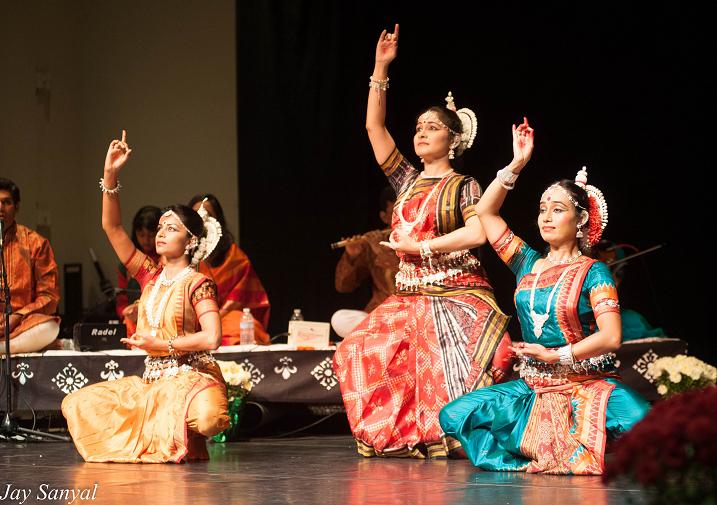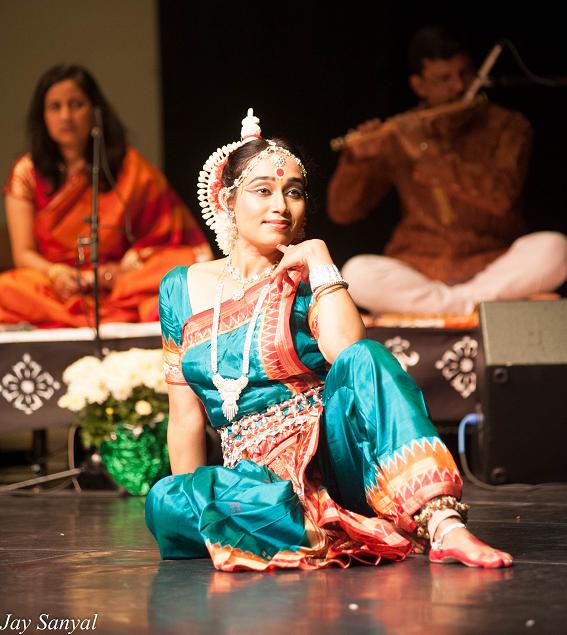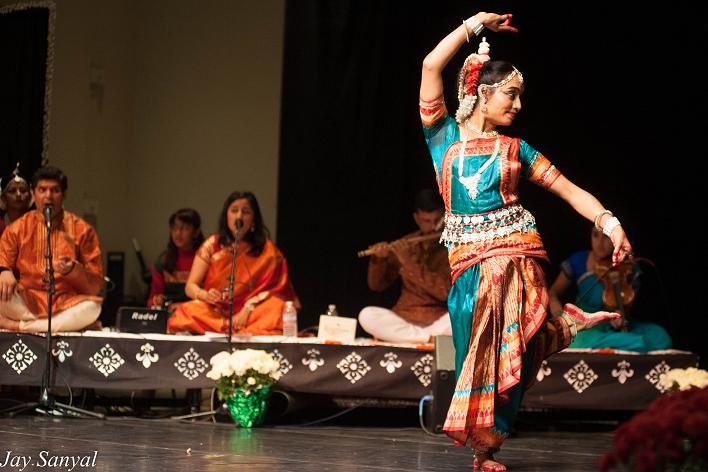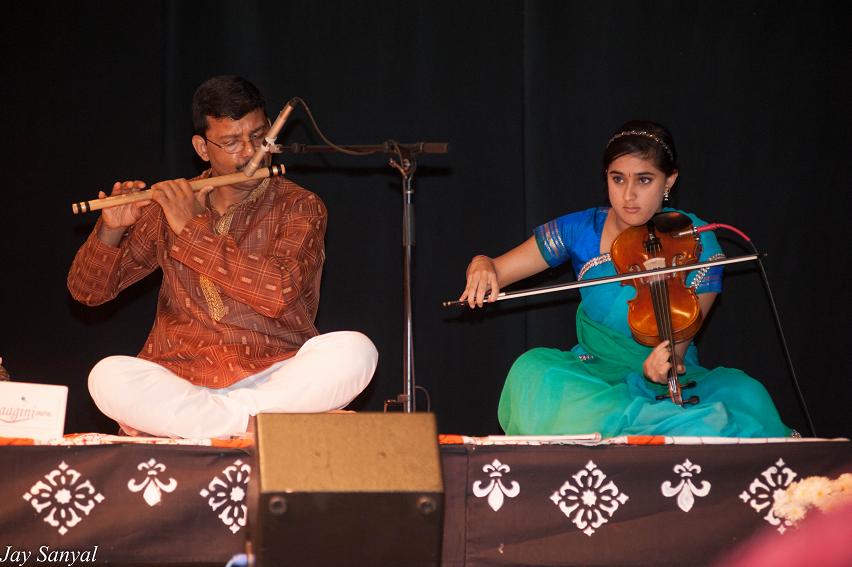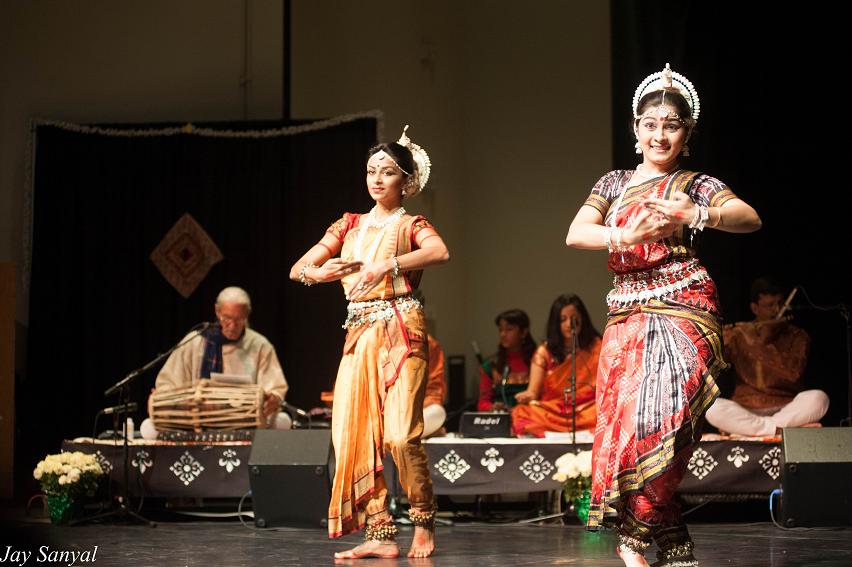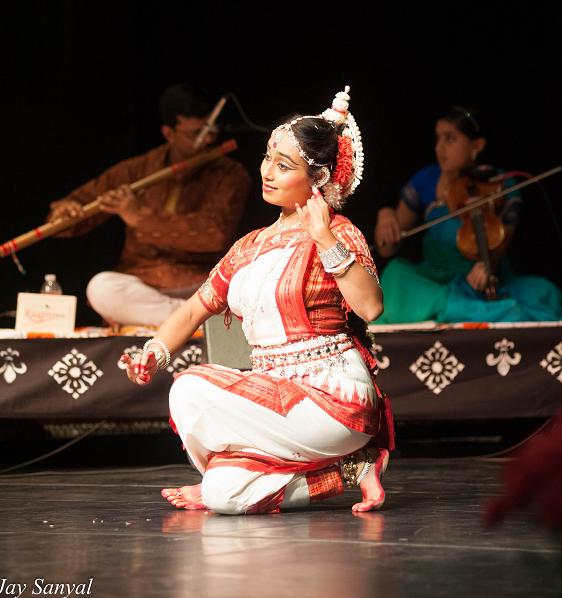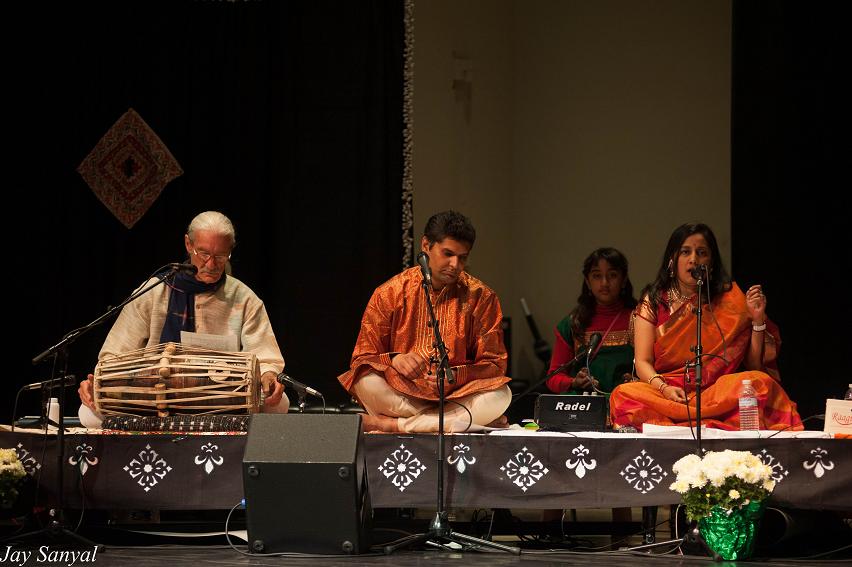Contribute
| Journey To Orissa: Odissi Music And Dance |
Susan Moore
11/06/2013
If you've never seen a classical Indian dance concert with live music accompaniment, given the opportunity, this is an experience you must not miss. This past weekend, that rare occasion was offered by Upasana Inc. and Wellesley College to the Boston public. The response was overwhelming. Days before the performance, every seat in the house had been claimed. In a collaborative effort, with Upasana Inc. providing the dancers and musicians, and Wellesley College providing the facility and funding, we were blessed with an unusual gathering of highly skilled artists from the Orissa traditions of dance, drumming, song and musical instruments.
The performers each embodied the pinnacle of their art form. Mouli Pal, a true master of Odissi dance and founder of Upasana Inc., produced and directed the performance. She drew from the traditional choreography of her longtime guru, Kelucharan Mohaptra, a major architect of the present-day Odissi dance form, revived for the modern world yet retaining its deep roots in the ancient past. Mouli shines on stage with the power of that tradition, having mastered it and then humbly offered it back in devotion. Her two accompanying dancers were Payal Mistry and Shamoyita Mukherjee, both highly skilled in their own right and with many credentials to their names. Their refined style and physical beauty framed the performance both as solo dancers and as a perfect compliment to Mouli's powerful dramatic presence.
The musicians were no less qualified in their craft. Phil Hollenbeck, a drummer in the Classical Indian style for over 40 years, carried the rhythms on the Mardala with unflinching expertise, providing Mouli and her dancers with the essential ingredient: spoken bols and flawlessly articulated taalas. The two singers, Shraddha Agarwal and Ujjwal Parikh, brought our hearts to heaven's brink with the sonorous tones of their voices and words sung in matchless beauty. Gopi Shanker provided the ethereal woven melodies of flute, reminding us of Lord Krishna's presence in the form of sound. The violinist, Sahana Srinivasan, was the hidden surprise. As a Lexington HS junior, her skill and training far surpasses her age by years. Pulling notes from thin air as if from the heavenly realms, she meticulously created whatever mood was required for the dancers. And last, but not least, was the cymbal accompanist of Medha Pal, Mouli's 9 year-old daughter. The ever-present soft and rhythmic clinking wafted as backdrop, while mother, daughter and Tradition melded into a graceful whole.
The performance included 6 dance pieces, each showcasing a specific style found in the Odissi Tradition. The first dance, Mangalacharan, opened the doorway with an invocation to Lord Jagannath, a favored Orissa incarnation of the Lord and protector of the Odissi dance tradition. From the bold postures depicting the great Lord of the Universe, the dance then transformed into the fluid and soft moves of Goddess Matangi, veena in hand symbolizing the Devi as embodiment of wisdom, knowledge and the arts.
The 2nd dance, Batu, was an offering to Lord Shiva as Lord of Dance in his aspect of Batukeshwara Bhairava. It was danced by Payal and Shamoyita and depicted the concept of pure dance, Nritta, with poses closely resembling the Indian sculptures of the feminine awash in beauty, line and mood. This dance also introduced the concept of Tribhangi, literally "having three breaks", where the body is seen as undulating planes shifting at the three points of neck, waist and knees. With expertise, the two dancers, individually and in tandem, carefully followed the drum beat while painting the stage with poses of women in play and relaxation.
Pallavi was a pure joy to behold. A true match of name and form, Pallavi meaning "blossoming," Mouli stepped onto the stage with a confidence hard to rival anywhere; and for good reason. Her abhinaya was flawless, her eyes bold and controlled in hypnotic movement, her mouth a Mona Lisa-like smile, and her languid mood gathering strength until the dance unfolds into a rapturous crescendo of exacting footwork and stunning poses; the flowering of animate dancer as inanimate nature.
As if Pallavi weren't enough in it's fast paced vortex, it was followed by the equally intense dance of Abhinaya. Mouli's unwaning energy poured forth in this dance based on the well-known Oriya poem, "Maare Baano," meaning "shooting thunderstorm." Mouli and musicians made this poem come alive to all our senses. Musically we felt the impending storm, the timeless waiting and then, in an instant, its onset, depicted in a syncopated drama as Mouli danced all parts of flashing lightening, warring thunderclouds, Indra astride his mighty elephant, and raging seas deep in the calamity of storm. The monsoon was upon us as we witnessed silently in awe.
The next piece brought us back to fairer moods in a dance performed to Jayadeva's Sanskrit poem, "Geeta Govinda." Here Mouli gifted us her skills with exacting abhinaya, delicate footwork and an ability to translate subtle mood into dance. As she danced, we saw Radha in her changing kaleidoscope of feelings: ecstatic expectancy, hurt and rejection, jealousy, resentment, retreat, and then opening to another, deeper dimension within: the secure feeling of her lover's love towards her. With this dance, we became intimately privy to the deepest truths of divine love.
Mokshaya, although short, gave us a glimpse into the real heart of sacred dance whose ultimate purpose is to unite dancer and audience with the Divine. It opened with voices chanting in a mantra-like echo as the violinist bowed the same cosmic reverberation on her instrument. The drumming began and it was as if the whole theater were bathed in a meditative trance. All three dancers appeared on stage. In unity they quicken the pace and began a dance of ecstatic joy giving us the sense that they were free to carve cosmic Time and Space at will. We heard the names of the Goddess being sung as dancers paid homage to her great power and compassion. Through her, deliverance is granted as all three dancers sank silently into a final pose of meditative bliss.
With this dance, our journey came to an end, a journey that had let us taste, albeit briefly, the finest of Orissa's artistic fruits. Even if for a fleeting moment, we came to know the depth of a tradition that has stood the test of time and risen once more to be claimed by the members of this small, yet significant group of performers. An outpouring of gratitude for this unique event was fully palpable in the long and thunderous applause that rose up from the audience.
You may also access this article through our web-site http://www.lokvani.com/
